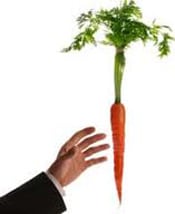Melissa Van Dyke
Since 2008 the Incentive Research Foundation (IRF) has been tracking trends in motivation, incentives and recognition. During this time the U.S. has experienced torrential changes in both economic status and the resultant buying power of employees. Although the Great Recession officially ended in 2009, the IRF saw the lingering effects of this era impact reward and recognition programs well into 2010 and 2011. These effects seem finally to be finally waning, with programs on the rebound and organizations once again focusing on investing in non-cash awards to motivate their employees and channel partners. Based on internal and external research, the IRF has identified five important trends for merchandise incentives in 2013.
1. Budgets Are Back
The IRF’s 2013 Spring Pulse study surveyed hundreds of program owners on their plans for the upcoming year. Program owners resoundingly responded that the economy was finally producing a constructive impact on their merchandise reward programs. In fact, more than half of respondents actually said that the U.S. economy was having a positive impact (either moderately or significantly) on their ability to plan and implement the merchandise incentive programs they desired. Conversely, only about one in 10 program owners said the economy was having a negative impact. Most importantly, over the last four Pulse surveys the IRF has noted a strong upward trend in program owners’ positive view on the economy’s impact. Barring any further strong or unforeseen economic gaffes, this should mean strong investments in merchandise incentives in the next year or two. To that point, when program owners were asked what their most anticipated changes were for the upcoming year, the top three changes consisted of adding or increasing the depth of their program. More than 25% of program owners said they would be increasing the merchandise award value in their programs—including experience-related products—in the future, or adding merchandise to their program.
2. Limited Luxury
Unlike a few years ago, when wearables and plaques topped the list for merchandise incentives, the IRF’s Spring Pulse survey found that luxury, albeit limited, is making its way back. In our most recent study, program owners placed electronics, apparel, golf and jewelry at the top of the list. More than 60% of program owners were incorporating electronics into their programs; almost half of program owners were incorporating apparel, golf items, jewelry, watches or luggage. Flowers, food and trophies were near the bottom of the list, but a quarter of all program owners still reported incorporating them. This trend reflects the broader consumer push toward slowly moving from the essential items desired during the recession to the more personally indulgent items that reflect a stronger economy.
3. Experience is Essential
The last three IRF Pulse Studies have shown an interesting trend toward experiences as well. Between 25% and 30% of program owners over the last three surveys have indicated they are adding experience-related options to their reward portfolios, including spa and event-related options. This echoes a broader consumer trend toward not only products, but experiences as well. This trend also transcends simply purchasing a trip or event and extends to both the consumer’s desire for an outstanding buying experience and their desire to experience products in a way that connects them to something bigger, whether to their immediate friends or to a broader world view. To this point, recent research has shown that the types of experiences consumers expect from their products varies depending on if they are a novice or advanced buyer, with novice buyers seeking novel buying experiences and advanced buyers seeking experiences that deepen their relationship to the product.
4. Watch Out for Wellness
Whether spawned by an aging baby-boomer population or a health-conscious generation-z, the overall wellness market in the U.S. is now a multi-billion dollar market, and getting larger every day. Consumers throughout the U.S. are increasingly focusing on activities and behaviors that increase their mental or physical wellbeing, and are reflecting this in their purchases. This can be seen in almost every type of purchase including athletic wear, cutting-edge kitchen supplies, health-conscious electronics, and equipment or videos to support a consumer’s activity of choice. This trend will only continue to grow as government and businesses take more active roles in incenting wellness in the US.
5. Apps in Everything
The last decade has shown a sharp uptick in industry’s ability to insert ever-increasing computing functionality into ever-decreasing devices. This capability has already started to move the average American consumer from simply a mobile consumer with an app for everything to a consumer with a desire for an app in everything. This can already be seen with sensor-enabled technologies that exist in everything from apparel, to sunglasses and watches. Driven and supported by the wellness trend, the desire for products to be smart and reactive will continue for the foreseeable future.
Overall, the strengthening economy, coupled with organizational desire to strengthen engagement in the employee and channel, is proving to be positive for merchandise incentive programs. As merchandise programs continue to expand and see success, anticipate a demand for products that connect achievers to bigger experiences, that support their desire for healthier living, and that provide them with the opportunity to interact digitally. For an update on these trends, look for the IRF’s report on Trends in Incentive and Recognition coming in December of 2014.
Melissa Van Dyke is president of the Incentive Research Foundation. She can be reached at [email protected].

 Network
Network

